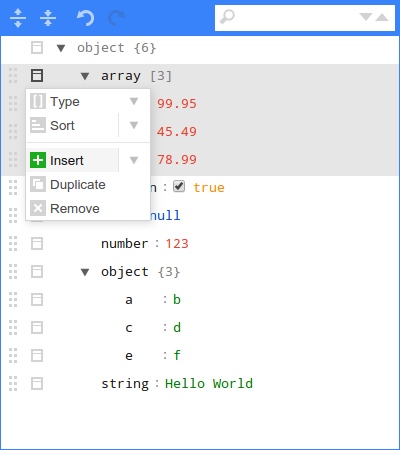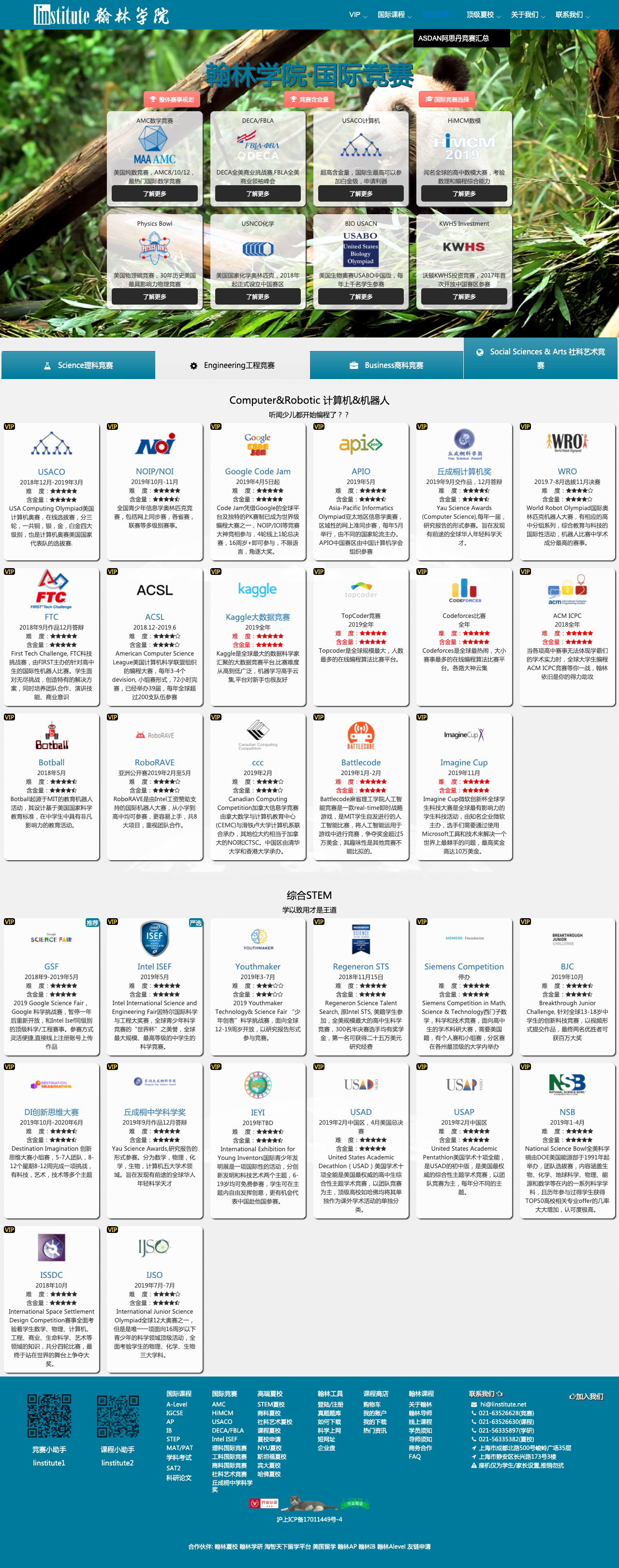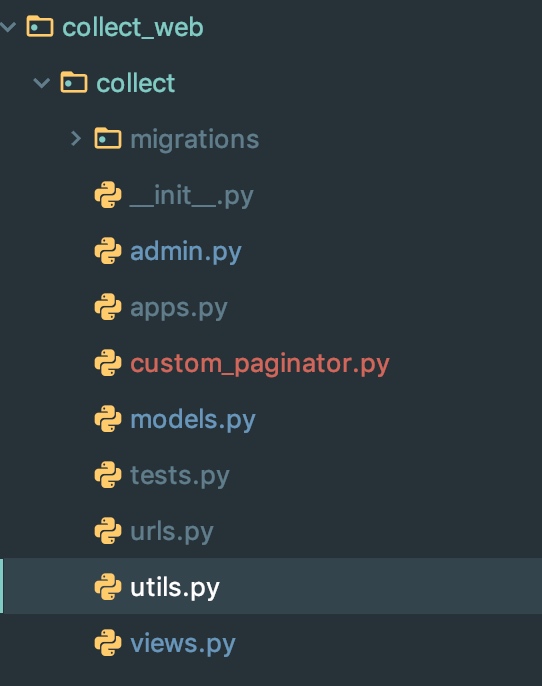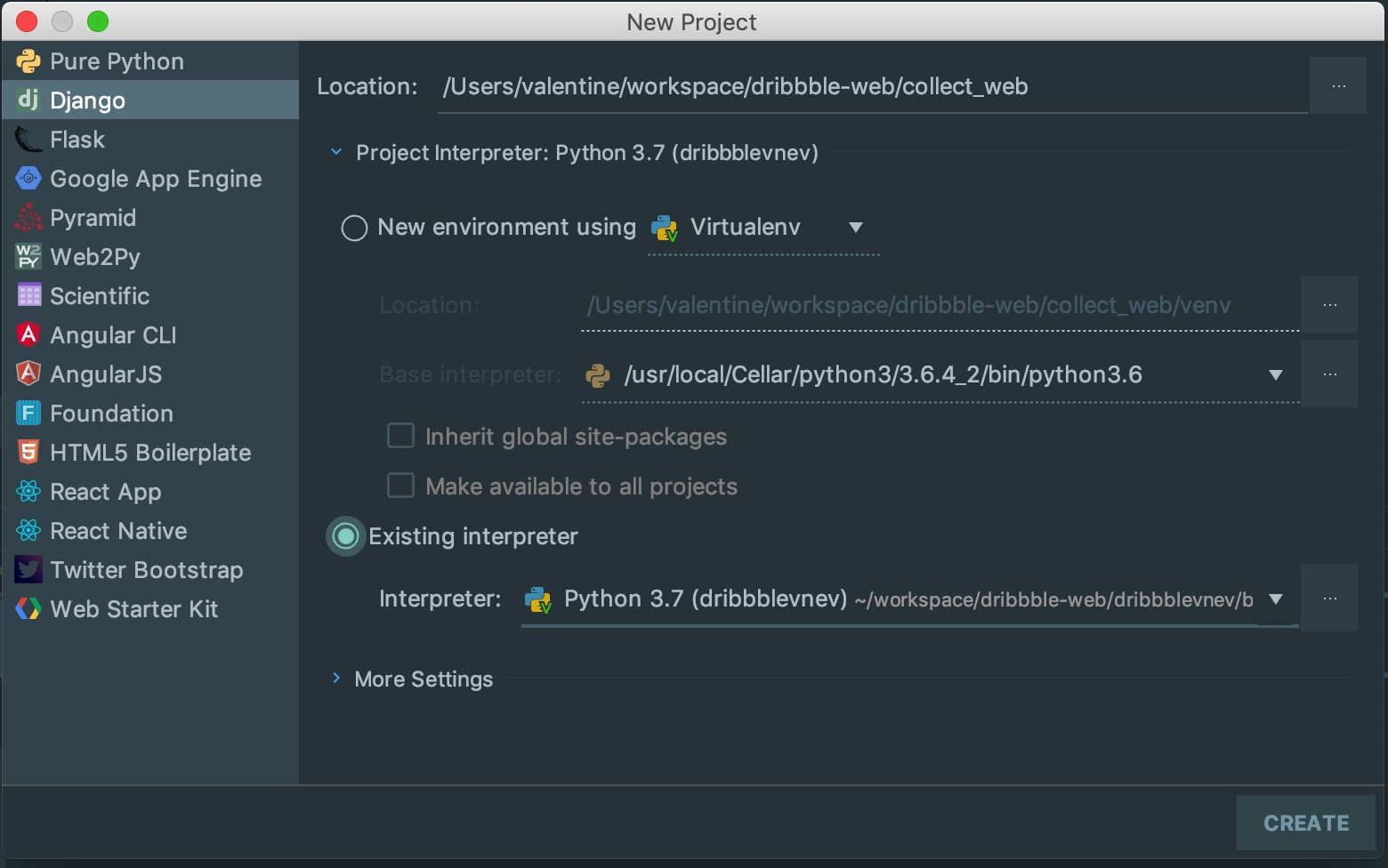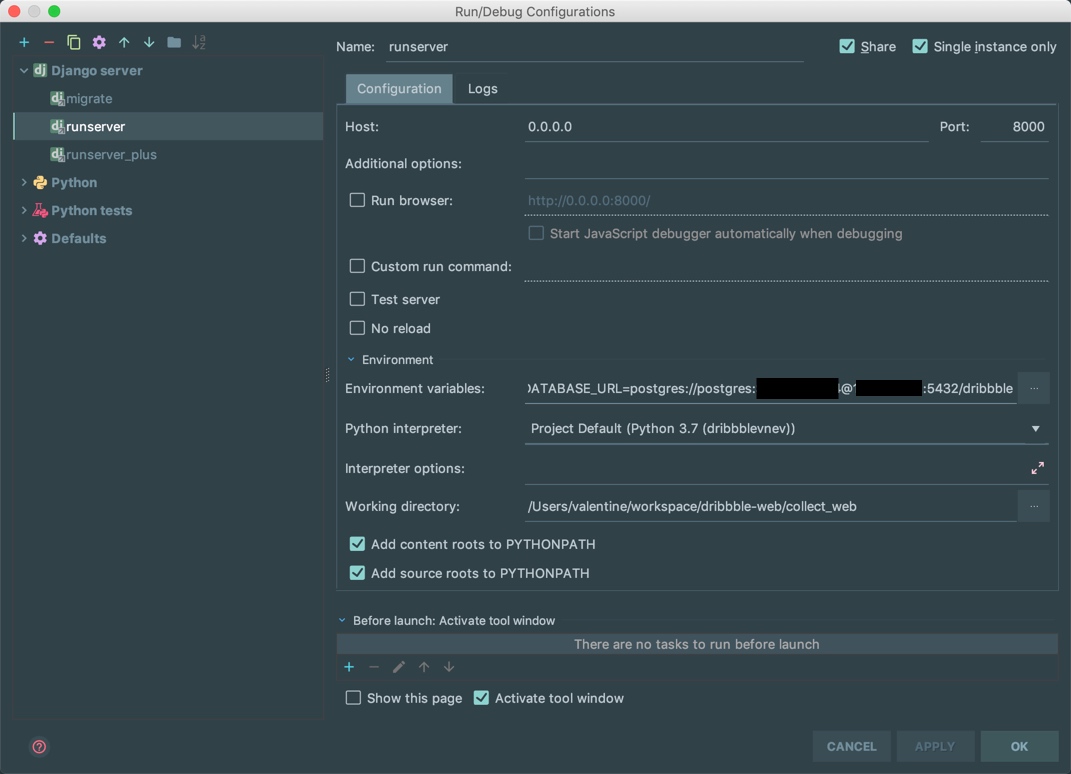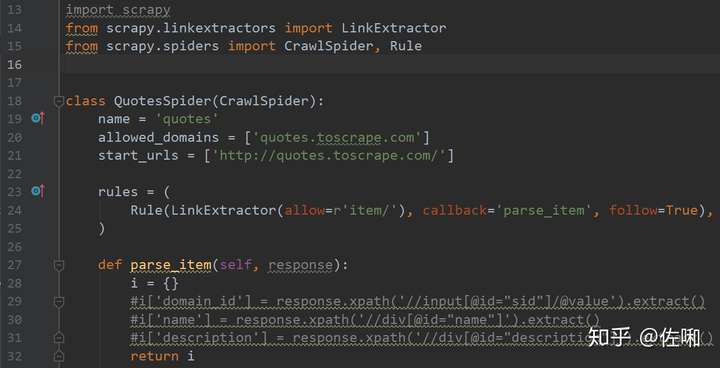The Django Speed Handbook: making a Django app faster
这篇文章真的写的非常好,讲解到了django是如何一步一步做性能优化的,可以优化的点还是很多的。
Over the course of developing several Django apps, I’ve learned quite a bit about speed optimizations. Some parts of this process, whether on the backend or frontend, are not well-documented. I’ve decided to collect most of what I know in this article.
If you haven’t taken a close look at the performance of your web-app yet, you’re bound to find something good here.
What’s in this article?
Why speed is important
On the web, 100 milliseconds can make a significant difference and 1 second is a lifetime. Countless studies indicate that faster loading times are associated with better conversion-rates, user-retention, and organic traffic from search engines. Most importantly, they provide a better user experience.
Different apps, different bottlenecks
There are many techniques and practices to optimize your web-app’s performance. It’s easy to get carried away. Look for the highest return-to-effort ratio. Different web-apps have different bottlenecks and therefore will gain the most when those bottlenecks are taken care of. Depending on your app, some tips will be more useful than others.
While this article is catered to Django developers, the speed optimization tips here can be adjusted to pretty much any stack. On the frontend side, it’s especially useful for people hosting with Heroku and who do not have access to a CDN service.
Analyzing and debugging performance issues
On the backend, I recommend the tried-and-true django-debug-toolbar. It will help you analyze your request/response cycles and see where most of the time is spent. Especially useful because it provides database query execution times and provides a nice SQL EXPLAIN in a separate pane that appears in the browser.
Google PageSpeed will display mainly frontend related advice, but some can apply to the backend as well (like server response times). PageSpeed scores do not directly correlate with loading times but should give you a good picture of where the low-hanging fruits for your app are. In development environments, you can use Google Chrome’s Lighthouse which provides the same metrics but can work with local network URIs. GTmetrix is another detail-rich analysis tool.
Disclaimer
Some people will tell you that some of the advice here is wrong or lacking. That’s okay; this is not meant to be a bible or the ultimate go-to-guide. Treat these techniques and tips as ones you may use, not should or must use. Different needs call for different setups.
Backend: the database layer
Starting with the backend is a good idea since it’s usually the layer that’s supposed to do most of the heavy lifting behind the scenes.
There’s little doubt in my mind which two ORM functionalities I want to mention first: these are select_related and prefetch_related. They both deal specifically with retrieving related objects and will usually improve speed by minimizing the number of database queries.
select_related
Let’s take a music web-app for example, which might have these models:
# music/models.py, some fields & code omitted for brevity
class RecordLabel(models.Model):
name = models.CharField(max_length=560)
class MusicRelease(models.Model):
title = models.CharField(max_length=560)
release_date = models.DateField()
class Artist(models.Model):
name = models.CharField(max_length=560)
label = models.ForeignKey(
RecordLabel,
related_name="artists",
on_delete=models.SET_NULL
)
music_releases = models.ManyToManyField(
MusicRelease,
related_name="artists"
)
So each artist is related to one and only one record company and each record company can sign multiple artists: a classic one-to-many relationship. Artists have many music-releases, and each release can belong to one artist or more.
I’ve created some dummy data:
- 20 record labels
- each record label has 25 artists
- each artist has 100 music releases
Overall, we have ~50,500 of these objects in our tiny database.
Now let’s wire-up a fairly standard function that pulls our artists and their label. django_query_analyze is a decorator I wrote to count the number of database queries and time to run the function. Its implementation can be found in the appendix.
# music/selectors.py
@django_query_analyze
def get_artists_and_labels():
result = []
artists = Artist.objects.all()
for artist in artists:
result.append({"name": artist.name, "label": artist.label.name})
return result
get_artists_and_labels is a regular function which you may use in a Django view. It returns a list of dictionaries, each contains the artist’s name and their label. I’m accessing artist.label.name to force-evaluate the Django QuerySet; you can equate this to trying to access these objects in a Jinja template:
{% for artist in artists_and_labels %}
<p>Name: {{ artist.name }}, Label: {{ artist.label.name }}</p>
{% endfor %}
Now let’s run this function:
ran function get_artists_and_labels
--------------------
number of queries: 501
Time of execution: 0.3585s
So we’ve pulled 500 artists and their labels in 0.36 seconds, but more interestingly — we’ve hit the database 501 times. Once for all the artists, and 500 more times: once for each of the artists’ labels. This is called “The N+1 problem”. Let’s tell Django to retrieve each artist’s label in the same query with select_related:
@django_query_analyze
def get_artists_and_labels_select_related():
result = []
artists = Artist.objects.select_related("label") # select_related
for artist in artists:
result.append(
{"name": artist.name, "label": artist.label.name if artist.label else "N/A"}
)
return result
Now let’s run this:
ran function get_artists_and_labels_select_related
--------------------
number of queries: 1
Time of execution: 0.01481s
500 queries less and a 96% speed improvement.
prefetch_related
Let’s look at another function, for getting each artist’s first 100 music releases:
@django_query_analyze
def get_artists_and_releases():
result = []
artists = Artist.objects.all()[:100]
for artist in artists:
result.append(
{
"name": artist.name,
"releases": [release.title for release in artist.music_releases.all()],
}
)
return result
How long does it take to fetch 100 artists and 100 releases for each one of them?
ran function get_artists_and_releases
--------------------
number of queries: 101
Time of execution: 0.18245s
Let’s change the artists variable in this function and add select_related so we can bring the number of queries down and hopefully get a speed boost:
artists = Artist.objects.select_related("music_releases")
If you actually do that, you’ll get an error:
django.core.exceptions.FieldError: Invalid field name(s) given in select_related: 'music_releases'. Choices are: label
That’s because select_related can only be used to cache ForeignKey or OneToOneField attributes. The relationship between Artist and MusicRelease is many-to-many though, and that’s where prefetch_ related comes in:
@django_query_analyze
def get_artists_and_releases_prefetch_related():
result = []
artists = Artist.objects.all()[:100].prefetch_related("music_releases") # prefetch_related
for artist in artists:
result.append(
{
"name": artist.name,
"releases": [rel.title for rel in artist.music_releases.all()],
}
)
return result
select_related can only cache the “one” side of the “one-to-many” relationship, or either side of a “one-to-one” relationship. You can use prefetch_related for all other caching, including the many side in one-to-many relationships, and many-to-many relationships. Here’s the improvement in our example:
ran function get_artists_and_releases_prefetch_related
--------------------
number of queries: 2
Time of execution: 0.13239s
Nice.
Things to keep in mind about select_related and prefetch_related:
- If you aren’t pooling your database connections, the gains will be even bigger because of fewer roundtrips to the database.
- For very large result-sets, running
prefetch_relatedcan actually make things slower. - One database query isn’t necessarily faster than two or more.
Indexing
Indexing your database columns can have a big impact on query performance. Why then, is it not the first clause of this section? Because indexing is more complicated than simply scattering db_index=True on your model fields.
Creating an index on frequently accessed columns can improve the speed of look-ups pertaining to them. Indexing comes at the cost of additional writes and storage space though, so you should always measure your benefit:cost ratio. In general, creating indices on a table will slow down inserts/updates.
Take only what you need
When possible, use values() and especially values_list() to only pull the needed properties of your database objects. Continuing our example, if we only want to display a list of artist names and don’t need the full ORM objects, it’s usually better to write the query like so:
artist_names = Artist.objects.values('name')
# <QuerySet [{'name': 'Chet Faker'}, {'name': 'Billie Eilish'}]>
artist_names = Artist.objects.values_list('name')
# <QuerySet [('Chet Faker',), ('Billie Eilish',)]>
artist_names = Artist.objects.values_list('name', flat=True)
# <QuerySet ['Chet Faker', 'Billie Eilish']>
Haki Benita, a true database expert (unlike me), reviewed some parts of this section. You should read Haki’s blog.
Backend: the request layer
The next layer we’re going to look at is the request layer. These are your Django views, context processors, and middleware. Good decisions here will also lead to better performance.
Pagination
In the section about select_related we were using the function to return 500 artists and their labels. In many situations returning this many objects is either unrealistic or undesirable. The section about pagination in the Django docs is crystal clear on how to work with the Paginator object. Use it when you don’t want to return more than N objects to the user, or when doing so makes your web-app too slow.
Asynchronous execution/background tasks
There are times when a certain action inevitably takes a lot of time. For example, a user requests to export a big number of objects from the database to an XML file. If we’re doing everything in the same process, the flow looks like this:
web: user requests file -> process file -> return response
Say it takes 45 seconds to process this file. You’re not really going to let the user wait all this time for a response. First, because it’s a horrible experience from a UX standpoint, and second, because some hosts will actually cut the process short if your app doesn’t respond with a proper HTTP response after N seconds.
In most cases, the sensible thing to do here is to remove this functionality from the request-response loop and relay it to a different process:
web: user requests file -> delegate to another process -> return response
|
v
background process: receive job -> process file -> notify user
Background tasks are beyond the scope of this article but if you’ve ever needed to do something like the above I’m sure you’ve heard of libraries like Celery.
Compressing Django’s HTTP responses
This is not to be confused with static-file compression, which is mentioned later in the article.
Compressing Django’s HTTP/JSON responses also stands to save your users some latency. How much exactly? Let’s check the number of bytes in our response’s body without any compression:
Content-Length: 66980
Content-Type: text/html; charset=utf-8
So our HTTP response is around 67KB. Can we do better? Many use Django’s built-in GZipMiddleware for gzip compression, but today the newer and more effective brotli enjoys the same support across browsers (except IE11, of course).
Important: Compression can potentially open your website to security breaches, as mentioned in the GZipMiddleware section of the Django docs.
Let’s install the excellent django-compression-middleware library. It will choose the fastest compression mechanism supported by the browser by checking the request’s Accept-Encoding headers:
pip install django-compression-middleware
Include it in our Django app’s middleware:
MIDDLEWARE = [
"django.middleware.security.SecurityMiddleware",
"django.contrib.sessions.middleware.SessionMiddleware",
"django.contrib.auth.middleware.AuthenticationMiddleware",
"compression_middleware.middleware.CompressionMiddleware",
# ...
]
And inspect the body’s Content-Length again:
Content-Encoding: br
Content-Length: 7239
Content-Type: text/html; charset=utf-8
The body size is now 7.24KB, 89% smaller. You can certainly argue this kind of operation should be delegated to a dedicated server like Ngnix or Apache. I’d argue that everything is a balance between simplicity and resources.
Caching
Caching is the process of storing the result of a certain calculation for faster future retrieval. Django has an excellent caching framework that lets you do this on a variety of levels and using different storage backends.
Caching can be tricky in data-driven apps: you’d never want to cache a page that’s supposed to display up-to-date, realtime information at all times. So, the big challenge isn’t so much setting up caching as it is figuring out what should be cached, for how long, and understanding when or how the cache is invalidated.
Before resorting to caching, make sure you’ve made proper optimizations at the database-level and/or on the frontend. If designed and queried properly, databases are ridiculously fast at pulling out relevant information at scale.
Frontend: where it gets hairier
Reducing static files/assets sizes can significantly speed up your web application. Even if you’ve done everything right on the backend, serving your images, CSS, and JavaScript files inefficiently will degrade your application’s speed.
Between compiling, minifying, compressing, and purging, it’s easy to get lost. Let’s try not to.
Serving static-files
You have several options on where and how to serve static files. Django’s docs mention a dedicated server running Ngnix and Apache, Cloud/CDN, or the same-server approach.
I’ve gone with a bit of a hybrid attitude: images are served from a CDN, large file-uploads go to S3, but all serving and handling of other static assets (CSS, JavaScript, etc…) is done using WhiteNoise (covered in-detail later).
Vocabulary
Just to make sure we’re on the same page, here’s what I mean when I say:
- Compiling: If you’re using SCSS for your stylesheets, you’ll first have to compile those to CSS because browsers don’t understand SCSS.
- Minifying: reducing whitespace and removing comments from CSS and JS files can have a significant impact on their size. Sometimes this process involves uglifying: the renaming of long variable names to shorter ones, etc…
- Compressing/Combining: for CSS and JS, combining multiple files to one. For images, usually means removing some data from images to make their files size smaller.
- Purging: remove unneeded/unused code. In CSS for example: removing selectors that aren’t used.
Serving static files from Django with WhiteNoise
WhiteNoise allows your Python web-application to serve static assets on its own. As its author states, it comes in when other options like Nginx/Apache are unavailable or undesired.
Let’s install it:
pip install whitenoise[brotli]
Before enabling WhiteNoise, make sure your STATIC_ROOT is defined in settings.py:
STATIC_ROOT = os.path.join(BASE_DIR, "staticfiles")
To enable WhiteNoise, add its WhiteNoise middleware right below SecurityMiddleware in settings.py:
MIDDLEWARE = [
'django.middleware.security.SecurityMiddleware',
'whitenoise.middleware.WhiteNoiseMiddleware',
# ...
]
In production, you’ll have to run manage.py collectstatic for WhiteNoise to work.
While this step is not mandatory, it’s strongly advised to add caching and compression:
STATICFILES_STORAGE = 'whitenoise.storage.CompressedManifestStaticFilesStorage'
Now whenever it encounters a {% static %} tag in templates, WhiteNoise will take care of compressing and caching the file for you. It also takes care of cache-invalidation.
One more important step: To ensure that we get a consistent experience between development and production environments, we add runserver_nostatic:
INSTALLED_APPS = [
'whitenoise.runserver_nostatic',
'django.contrib.staticfiles',
# ...
]
This can be added regardless of whether DEBUG is True or not, because you don’t usually run Django via runserver in production.
I found it useful to also increase the caching time:
# Whitenoise cache policy
WHITENOISE_MAX_AGE = 31536000 if not DEBUG else 0 # 1 year
Wouldn’t this cause problems with cache-invalidation? No, because WhiteNoise creates versioned files when you run collectstatic:
<link rel="stylesheet" href="/static/CACHE/css/4abd0e4b71df.css" type="text/css" media="all">
So when you deploy your application again, your static files are overwritten and will have a different name, thus the previous cache becomes irrelevant.
Compressing and combining with django-compressor
WhiteNoise already compresses static files, so django-compressor is optional. But the latter offers an additional enhancement: combining the files. To use compressor with WhiteNoise we have to take a few extra steps.
Let’s say the user loads an HTML document that links three .css files:
<head>
<link rel="stylesheet" href="base.css" type="text/css" media="all">
<link rel="stylesheet" href="additions.css" type="text/css" media="all">
<link rel="stylesheet" href="new_components.css" type="text/css" media="all">
</head>
Your browser will make three different requests to these locations. In many scenarios it’s more effective to combine these different files when deploying, and django-compressor does that with its {% compress css %} template tag:
This:
{% load compress %}
<head>
{% compress css %}
<link rel="stylesheet" href="base.css" type="text/css" media="all">
<link rel="stylesheet" href="additions.css" type="text/css" media="all">
<link rel="stylesheet" href="new_components.css" type="text/css" media="all">
{% compress css %}
</head>
Becomes:
<head>
<link rel="stylesheet" href="combined.css" type="text/css" media="all">
</head>
Let’s go over the steps to make django-compressor and WhiteNoise play well. Install:
pip install django_compressor
Tell compressor where to look for static files:
COMPRESS_STORAGE = "compressor.storage.GzipCompressorFileStorage"
COMPRESS_ROOT = os.path.abspath(STATIC_ROOT)
Because of the way these two libraries intercept the request-response cycle, they’re incompatible with their default configurations. We can overcome this by modifying some settings.
I prefer to use environment variables in .env files and have one Django settings.py, but if you have settings/dev.py and settings/prod.py, you’ll know how to convert these values:
main_project/settings.py:
from decouple import config
#...
COMPRESS_ENABLED = config("COMPRESS_ENABLED", cast=bool)
COMPRESS_OFFLINE = config("COMPRESS_OFFLINE", cast=bool)
COMPRESS_OFFLINE is True in production and False in development. COMPRESS_ENABLED is True in both
.
With offline compression, one must run manage.py compress on every deployment. On Heroku, you’ll want to disable the platform from automatically running collectstatic for you (on by default) and instead opt to do that in the post_compile hook, which Heroku will run when you deploy. If you don’t already have one, create a folder called bin at the root of your project and inside of it a file called post_compile with the following:
python manage.py collectstatic --noinput
python manage.py compress --force
python manage.py collectstatic --noinput
Another nice thing about compressor is that it can compress SCSS/SASS files:
COMPRESS_PRECOMPILERS = (
("text/x-sass", "django_libsass.SassCompiler"),
("text/x-scss", "django_libsass.SassCompiler"),
)
Minifying CSS & JS
Another important thing to apply when talking about load-times and bandwidth usage is minifying: the process of (automatically) decreasing your code’s file-size by eliminating whitespace and removing comments.
There are several approaches to take here, but if you’re using django-compressor specifically, you get that for free as well. You just need to add the following (or any other filters compressor supports) to your settings.py file:
COMPRESS_FILTERS = {
"css": [
"compressor.filters.css_default.CssAbsoluteFilter",
"compressor.filters.cssmin.rCSSMinFilter",
],
"js": ["compressor.filters.jsmin.JSMinFilter"],
}
Defer-loading JavaScript
Another thing that contributes to slower performance is loading external scripts. The gist of it is that browsers will try to fetch and execute JavaScript files in the <head> tag as they are encountered and before parsing the rest of the page:
<html>
<head>
<script src="https://will-block.js"></script>
<script src="https://will-also-block.js"></script>
</head>
</html>
We can use the async and defer keywords to mitigate this:
<html>
<head>
<script async src="somelib.somecdn.js"></script>
</head>
</html>
async and defer both allow the script to be fetched asynchronously without blocking. One of the key differences between them is when the script is allowed to execute: With async, once the script has been downloaded, all parsing is paused until the script has finished executing, while with defer the script is executed only after all HTML has been parsed.
I suggest referring to Flavio Copes’ article on the defer and aysnc keywords. Its general conclusion is:
The best thing to do to speed up your page loading when using scripts is to put them in the
head, and add adeferattribute to yourscripttag.
Lazy-loading images
Lazily loading images means that we only request them when or a little before they enter the client’s (user’s) viewport. It saves time and bandwidth ($ on cellular networks) for your users. With excellent, dependency-free JavaScript libraries like LazyLoad, there really isn’t an excuse to not lazy-load images. Moreover, Google Chrome natively supports the lazy attribute since version 76.
Using the aforementioned LazyLoad is fairly simple and the library is very customizable. In my own app, I want it to apply on images only if they have a lazy class, and start loading an image 300 pixels before it enters the viewport:
$(document).ready(function (e) {
new LazyLoad({
elements_selector: ".lazy", // classes to apply to
threshold: 300 // pixel threshold
})
})
Now let’s try it with an existing image:
<img class="album-artwork" alt="{{ album.title }}" src="{{ album.image_url }}">
We replace the src attribute with data-src and add lazy to the class attribute:
<img class="album-artwork lazy" alt="{{ album.title }}" data-src="{{ album.image_url }}">
Now the client will request this image when the latter is 300 pixels under the viewport.
If you have many images on certain pages, using lazy-loading will dramatically improve your load times.
Optimize & dynamically scale images
Another thing to consider is image-optimization. Beyond compression, there are two more techniques to consider here.
First, file-format optimization. There are newer formats like WebP that are presumably 25-30% smaller than your average JPEG image at the same quality. As of 02/2020 WebP has decent but incomplete browser support, so you’ll have to provide a standard format fallback if you want to use it.
Second, serving different image-sizes to different screen sizes: if some mobile device has a maximum viewport width of 650px, then why serve it the same 1050px image you’re displaying to 13″ 2560px retina display?
Here, too, you can choose the level of granularity and customization that suits your app. For simpler cases, You can use the srcset attribute to control sizing and be done at that, but if for example you’re also serving WebP with JPEG fallbacks for the same image, you may use the <picture> element with multiple sources and source-sets.
If the above sounds complicated for you as it does for me, this guide should help explain the terminology and use-cases.
Unused CSS: Removing imports
If you’re using a CSS framework like Bootstrap, don’t just include all of its components blindly. In fact, I would start with commenting out all of the non-essential components and only add those gradually as the need arises. Here’s a snippet of my bootstrap.scss, where all of its different parts are imported:
// ...
// Components
// ...
@import "bootstrap/dropdowns";
@import "bootstrap/button-groups";
@import "bootstrap/input-groups";
@import "bootstrap/navbar";
// @import "bootstrap/breadcrumbs";
// @import "bootstrap/badges";
// @import "bootstrap/jumbotron";
// Components w/ JavaScript
@import "bootstrap/modals";
@import "bootstrap/tooltip";
@import "bootstrap/popovers";
// @import "bootstrap/carousel";
I don’t use things like badges or jumbotron so I can safely comment those out.
Unused CSS: Purging CSS with PurgeCSS
A more aggressive and more complicated approach is using a library like PurgeCSS, which analyzes your files, detects CSS content that’s not in use, and removes it. PurgeCSS is an NPM package, so if you’re hosting Django on Heroku, you’ll need to install the Node.js buildpack side-by-side with your Python one.
Conclusion
I hope you’ve found at least one area where you can make your Django app faster. If you have any questions, suggestions, or feedback don’t hesitate to drop me a line on Twitter.
Appendices
Decorator used for QuerySet performance analysis
Below is the code for the django_query_analyze decorator:
from timeit import default_timer as timer
from django.db import connection, reset_queries
def django_query_analyze(func):
"""decorator to perform analysis on Django queries"""
def wrapper(*args, **kwargs):
avs = []
query_counts = []
for _ in range(20):
reset_queries()
start = timer()
func(*args, **kwargs)
end = timer()
avs.append(end - start)
query_counts.append(len(connection.queries))
reset_queries()
print()
print(f"ran function {func.__name__}")
print(f"-" * 20)
print(f"number of queries: {int(sum(query_counts) / len(query_counts))}")
print(f"Time of execution: {float(format(min(avs), '.5f'))}s")
print()
return func(*args, **kwargs)
return wrapper
catalog目录树状图的形成
目录的树状图的django中可以使用第三方包来完善,我们可以使用django-mptt这个库来完善相应的信息
首先需要在模型中添加相应的字段,使用
from mptt.models import MPTTModel, TreeForeignKey
class TagCatalog(MPTTModel):
tag_catalog_name = models.CharField('tag_catalog_name', null=True, blank=True, max_length=255)
tag_catalog_description = models.TextField('tag_catalog_description', null=True, blank=True, max_length=255)
c_tags = models.ManyToManyField(MyCustomTag, blank=True )
parent = TreeForeignKey('self', on_delete=models.CASCADE, null=True, blank=True, related_name='tag_catalog')
class MPTTMeta:
order_insertion_by = ['tag_catalog_name']
def __str__(self):
return self.tag_catalog_name
发布模型之后,可以修改admin的内容
from mptt.admin import MPTTModelAdmin
class TagCatalogAdmin(MPTTModelAdmin):
mptt_level_indent = 20
fields = ['tag_catalog_name', 'tag_catalog_description', 'parent', 'c_tags']
list_display =('tag_catalog_name',)
filter_horizontal = ('c_tags',)
admin.site.register(TagCatalog, TagCatalogAdmin)
在views中添加相应的模型
最后在Template中添加模板就可以了
<ul>
{% recursetree tag_catalogs %}
<li>
{% if node.level == 0 %}
<h4 class="widget-title">{{ node.tag_catalog_name }}</h4>
{% elif node.level == 1 %}
<h6>{{ node.tag_catalog_name }}</h6>
{% else %}
{{ node.tag_catalog_name }}
{% endif %}
{% if not node.is_leaf_node %}
<ul class="children">
{{ children }}
</ul>
{% endif %}
</li>
{% endrecursetree %}
Django分页的实现
这篇博客非常好的详述了django分页的自定义修改方法
发表于 2018-01-23 | 分类于 Django |
可以通过 Django 提供的 Paginator 类来实现分页功能。也可以自定义实现分页功能。
自定义实现分页
一、原理解析
1、初始数据:
total_data: 数据集合,这是一个list,存放所有的数据。
page_size: 每页显示多少条数据。
num_page: 分页处显示页码数量。
2、分页需要使用的数据
current_page: 当前页,当前的页码。
通过 request.GET 获得:
current_page = int(request.GET.get('p'))
total_num: 数据条目总数
total_num = len(total_data)
max_page: 最大页码数
计算方法: 数据总条数除以每页显示条数,若余数等于0,最大页码数为商,否则最大页码数为商+1
getmax_page = lambda x,y: divmod(x,y)[0] if divmod(x,y)[1] == 0 else divmod(x,y)[0]+1
max_page = getmax_page(total_num,page_size)
peer_data: 每页显示数据
计算方法: 当我们定义page_size=10的时候,每页显示10条数据
第一页:0:10
第二页:10:20
以此类推…….
第n页:(n-1)x10:(nx10)
就可以推出每页显示数据的计算方法:
start = (current_page-1)*page_size
end = current_page*page_size
peer_data = total_data[start:end]
prev_page: 上一页页码
当前页小于等于1的时候,上一页为1
if current_page <= 1:
prev_page =1
else:
prev_page = current_page - 1
next_page: 下一页页码
当前页大于等于最大页时,下一页为最大页
if current_page >= max_page:
next_page = max_page
else:
next_page = current_page + 1
num_page_range: 分页区域显示页码范围
此处如果全部显示页码的话不合适,页码数太多页码就超级难看了,因此可以显示一个固定数量的页码值。
前面定义的 num_page (分页区域显示的页码数量)就在这里用到了。
如果num_page=7的话就这样显示:
1 2 3 4 5 6 7
前半区 后半区
实现逻辑如下:
1、总页数 max_page 小于最多显示页数 num_page ,显示1到总页数 max_page,此时显示的页码数量小于最多显示页数 num_page。
2、当前页 current_page 小于等于最多显示页数的一半 num_page/2,显示1到最多显示页数 num_page,当前页在前半区。
3、当前页 current_page 加上最多显示页数的一半 num_page/2 大于总页数 max_page,显示(总页数 max_page 减去最大显示页数 num_page)到总页数 max_page,当前页在后半区。
4、前后各显示最多显示页数一半,当前页在中间位置。
part = num_page/2
if max_page < num_page:
num_page_range = [i for i in range(1,max_page + 1)]
elif current_page <= part:
num_page_range = [i for i in range(1,num_page + 1)]
elif current_page + part > max_page:
num_page_range = [i for i in range(max_page - max_page_num,max_page + 1)]
else:
num_page_range = [i for i in range(current_page-part,current_page + part + 1)]
3、视图函数传给模板的变量汇总
current_page: 当前页码
peer_data: 当前页数据
prev_page: 上一页页码
next_page: 下一页页码
max_page: 最大页码数
num_page_range: 分页区域显示页码范围
4、前端模板逻辑分析
前端页面调用 Bootstrap 分页组件来显示:
<nav aria-label="Page navigation">
<ul class="pagination">
<li>
<a href="#" aria-label="Previous">
<span aria-hidden="true">«</span>
</a>
</li>
<li><a href="#">1</a></li>
<li><a href="#">2</a></li>
<li><a href="#">3</a></li>
<li><a href="#">4</a></li>
<li><a href="#">5</a></li>
<li>
<a href="#" aria-label="Next">
<span aria-hidden="true">»</span>
</a>
</li>
</ul>
</nav>
<ul class="pagination">
{% if current_page == 1 %}
<li class="disabled">
<a href="#" aria-label="Previous">
<span aria-hidden="true">«</span>
</a>
</li>
{% else %}
<li>
<a href="?p={{ prev_page }}" aria-label="Previous">
<span aria-hidden="true">«</span>
</a>
</li>
{% endif %}
下一页按钮
当前为最后一页时,禁用右边的下一页按钮
{% if current_page == max_page %}
<li class="disabled">
<a href="#" aria-label="Next">
<span aria-hidden="true">»</span>
</a>
</li>
{% else %}
<li>
<a href="?p={{ next_page }}" aria-label="Next">
<span aria-hidden="true">»</span>
</a>
</li>
{% endif %}
显示页码范围
根据视图传过来的分页区域显示页码范围 num_page_range 来循环显示,并对当前页进行样式处理:
{% for p in num_page_range %}
{% if p == current_page %}
<li class="active"><a href="#">{{ p }}</a></li>
{% else %}
<li><a href="?p={{ p }}">{{ p }}</a></li>
{% endif %}
{% endfor %}
二、将分页实现为Web框架公共组件
分页的使用其实非常广泛,前面分析了分页实现的原理,这里我们将代码实现为公共组件,以后使用时就可以直接调用。
1、在app下建立py文件并自定义构建类
pager.py
#coding:utf-8
class Pagination(object):
def __init__(self, totalCount, currentPage, perPageItemNum=10, maxPageNum=7):
# 数据条目总数
self.total_count = totalCount
# 当前页页码值
self.current_page = currentPage
# 每页显示数据条目数
self.per_page_item_num = perPageItemNum
# 页码区域最多显示页码数
self.max_page_num = maxPageNum
def start(self):
return (self.current_page - 1)*self.per_page_item_num
def end(self):
return self.current_page*self.per_page_item_num
@property
def num_pages(self):
'''
装饰器@property将函数的方法的调用方式转换为属性调用方式
求出总页数
'''
a,b = divmod(self.total_count, self.per_page_item_num)
if a == 0:
return a
else:
return a+1
def pager_num_page(self):
'''
分页区域显示页码范围
'''
part = self.max_page_num/2
if self.num_pages < self.max_page_num:
return range(1,self.num_pages+1)
elif self.current_page <= part:
return range(1,self.max_page_num+1)
elif self.current_page + part > self.num_pages:
return range(self.num_pages-self.max_page_num,self.num_pages+1)
else:
return range(self.current_page-part,self.current_page+part+1)
def page_str(self):
'''
html返回到templates,templates中需引入bootStrap的css样式
'''
page_list = []
first = """
<li><a href='?p=1'>首页</a></li>
"""
page_list.append(first)
if self.current_page == 1:
prev_page = """
<li class="disabled">
<span>
<span aria-hidden="true">«</span>
</span>
</li>
"""
else:
prev_page = """
<li>
<a href="?p=%s" aria-label="Previous">
<span aria-hidden="true">«</span>
</a>
</li>
""" %(self.current_page - 1)
page_list.append(prev_page)
for i in self.pager_num_page():
if i == self.current_page:
temp = """
<li class="active">
<li class="active"><a href="#">%s</a></li>
</li>
""" %i
else:
temp = """
<li>
<a href="?p=%s">%s</a>
</li>
""" %(i,i)
page_list.append(temp)
if self.current_page == self.num_pages:
next_page = """
<li class="disabled">
<span>
<span aria-hidden="true">»</span>
</span>
</li>
"""
else:
next_page = """
<li>
<a href="?p=%s" aria-label="Next">
<span aria-hidden="true">»</span>
</a>
</li>
""" %(self.current_page + 1)
page_list.append(next_page)
last = """
<li><a href='?p=%s'>尾页</a></li>
""" %self.num_pages
page_list.append(last)
return ''.join(page_list)
2、调用 Pagination 实现分页
视图方法逻辑: views.py
#coding:utf-8
from django.shortcuts import render
from app01.pager import Pagination
# 定义后台数据
mylist=[]
for i in range(1,1000):
temp = {'id':i,'name':'zhang'+str(i),'age':i,'addr':'gaoxin'+str(i),'score':2*i +1}
mylist.append(temp)
def mypager(request):
try:
current_page = int(request.GET.get('p'))
except:
current_page = 1
page_obj = Pagination(len(mylist),current_page,15,5)
data = mylist[page_obj.start():page_obj.end()]
return render(request,'mypager.html',locals())
模板使用: mypager.html
<!DOCTYPE html>
<html lang="en">
{% load staticfiles %}
<head>
<meta charset="UTF-8">
<title>mypager</title>
<link rel="stylesheet" href="{% static 'css/bootstrap.css' %}">
</head>
<body>
<div class="container">
<div class="panel">
<table class="table table-striped">
<tr>
<th>ID</th>
<th>name</th>
<th>age</th>
<th>addr</th>
<th>score</th>
</tr>
{% for item in data %}
<tr>
<td>{{ item.id }}</td>
<td>{{ item.name }}</td>
<td>{{ item.age }}</td>
<td>{{ item.addr }}</td>
<td>{{ item.score }}</td>
</tr>
{% endfor %}
</table>
</div>
<nav aria-label="Page navigation">
<ul class="pagination">
{{ page_obj.page_str | safe }}
</ul>
</nav>
</div>
</body>
</html>
使用Django内置分页
Django提供了两个新的类(Paginator和Page)来帮助你管理分页数据,这两个类存放在 django/core/paginator.py .它可以接收列表、元组或其它可迭代的对象。
1、语法解析
Paginator类
基于分页对象
count 数据总个数
num_pages 总共可分页数
page_range 总页数索引范围
Page类
基于分页对象中的某一页
object_list 分页对象的元素列表
number 分页对象的当前页值
has_next 是否有下一页
next_page_number 下一页代码
has_previous 是否有上一页
previous_page_number 上一页代码
has_other_pages 是否有其他页
start_index 分页对象元素的开始索引
end_index 分页对象元素的结束索引
2、基本语法实例
import os
from django.core.paginator import Paginator
objects = ['john','paul','george','ringo','lucy','meiry','checy','wind','flow','rain']<br>
p = Paginator(objects,3) # 3条数据为一页,实例化分页对象
print p.count # 10 对象总共10个元素
print p.num_pages # 4 对象可分4页
print p.page_range # xrange(1, 5) 对象页的可迭代范围
page1 = p.page(1) # 取对象的第一分页对象
print page1.object_list # 第一分页对象的元素列表['john', 'paul', 'george']
print page1.number # 第一分页对象的当前页值 1
page2 = p.page(2) # 取对象的第二分页对象
print page2.object_list # 第二分页对象的元素列表 ['ringo', 'lucy', 'meiry']
print page2.number # 第二分页对象的当前页码值 2
print page1.has_previous() # 第一分页对象是否有前一页 False
print page1.has_other_pages() # 第一分页对象是否有其它页 True
print page2.has_previous() # 第二分页对象是否有前一页 True
print page2.has_next() # 第二分页对象是否有下一页 True
print page2.next_page_number() # 第二分页对象下一页码的值 3
print page2.previous_page_number() # 第二分页对象的上一页码值 1
print page2.start_index() # 第二分页对象的元素开始索引 4
print page2.end_index() # 第2分页对象的元素结束索引 6
3、内置分页使用实例
视图方法逻辑: views.py
#coding:utf-8
from django.shortcuts import render
from django.core.paginator import Paginator,PageNotAnInteger,EmptyPage
# Create your views here.
mylist=[]
for i in range(1,1000):
temp = {'id':i,'name':'zhang'+str(i),'age':i,'addr':'gaoxin'+str(i),'score':2*i +1}
mylist.append(temp)
def myin(request):
try:
current_page = int(request.GET.get('p'))
except:
current_page = 1
# 实例化分页对象,每页10条数据
paginator = Paginator(mylist,10)
try:
# 取对象的当前页分页对象
posts = paginator.page(current_page)
# current_page非数字时取第一页
except PageNotAnInteger:
posts = paginator.page(1)
# current_page空时取最后一页
except EmptyPage:
posts = paginator.page(paginator.num_pages)
return render(request,'inpage.html',{'posts':posts})
模板使用: inpage.html
<!DOCTYPE html>
{% load staticfiles %}
<html lang="en">
<head>
<meta charset="UTF-8">
<title>内置</title>
<link rel="stylesheet" href="{% static 'css/bootstrap.css' %}">
</head>
<body>
<div class="container">
<div class="panel">
<table class="table table-striped">
<tr>
<th>ID</th>
<th>name</th>
<th>age</th>
<th>addr</th>
<th>score</th>
</tr>
{% for item in posts.object_list %}
<tr>
<td>{{ item.id }}</td>
<td>{{ item.name }}</td>
<td>{{ item.age }}</td>
<td>{{ item.addr }}</td>
<td>{{ item.score }}</td>
</tr>
{% endfor %}
</table>
</div>
<nav aria-label="Page navigation">
<ul class="pagination">
<!--当前页分页对象如果有上一页-->
{% if posts.has_previous %}
<li>
<a href="?p={{ posts.previous_page_number }}" aria-label="Previous">
<span aria-hidden="true">«</span>
</a>
</li>
{% else %}
<li class="disabled">
<a href="#" aria-label="Previous">
<span aria-hidden="true">«</span>
</a>
</li>
{% endif %}
<!--循环显示可迭代页码范围-->
{% for p in posts.paginator.page_range %}
<!--如果是当前页,高亮显示-->
{% if p == posts.number %}
<li class="active"><a href="#">{{ p }}</a></li>
{% else %}
<li><a href="?p={{ p }}">{{ p }}</a></li>
{% endif %}
{% endfor %}
<!--当前页分页对象如果有下一页-->
{% if posts.has_next %}
<li>
<a href="?p={{ posts.next_page_number }}" aria-label="Next">
<span aria-hidden="true">»</span>
</a>
</li>
{% else %}
<li class="disabled">
<a href="#" aria-label="Next">
<span aria-hidden="true">»</span>
</a>
</li>
{% endif %}
</ul>
</nav>
</div>
</body>
</html>
使用Django内置Paginator可以实现分页,但分页区域显示的页码范围 page_range 默认是全部,如果页数很多,页码效果将会很差,下面介绍修改扩展Django内置分页,实现自定义分页区域显示的页码范围功能。
4、扩展Django内置分页
在视图函数中自定义一个新类,继承 django.core.paginator.Paginator 来进行扩展。
from django.core.paginator import Paginator,PageNotAnInteger,EmptyPage
class CustomPaginator(Paginator):
def __init__(self ,current_page, per_pager_num, *args, **kwargs):
# 当前页
self.current_page = int(current_page)
# 页码最大显示范围
self.per_pager_num = per_pager_num
# 继承父类Paginator的其他属性方法
Paginator.__init__(self, *args, **kwargs)
def pager_num_range(self):
if self.num_pages < self.per_pager_num:
return range(1, self.num_pages + 1)
part = int(self.per_pager_num / 2)
if self.current_page <= part:
return range(1, self.per_pager_num + 1)
if (self.current_page + part) > self.num_pages:
return range(self.num_pages - self.per_pager_num + 1, self.num_pages + 1)
else:
return range(self.current_page - part, self.current_page + part + 1)
## 调用
mylist=[]
for i in range(1,1000):
temp = {'id':i,'name':'zhang'+str(i),'age':i,'addr':'gaoxin'+str(i),'score':2*i +1}
mylist.append(temp)
def myin(request):
try:
current_page = int(request.GET.get('p'))
except:
current_page = 1
# 实例化分页对象,每页10条数据
paginator = CustomPaginator(current_page, 5, mylist, 10)
try:
# 取对象的当前页分页对象
posts = paginator.page(current_page)
# current_page非数字时取第一页
except PageNotAnInteger:
posts = paginator.page(1)
# current_page空时取最后一页
except EmptyPage:
posts = paginator.page(paginator.num_pages)
return render(request,'inpage.html',{'posts':posts})
完美解决问题。
Django脚手架分析
awesome-django
cookiecutter-django
比较好的脚手架,一直在维护
代码帮助文档也比较完善,适合于研究
https://cookiecutter-django.readthedocs.io/en/latest/developing-locally.html
http://www.debugger.wiki/article/html/155222640058179
original
新一代 django 项目开发脚手架。
当你经常面临开发各种中小型项目,且需要支持微信登录、微信小程序逻辑的时候, 用这个脚手架会节省很多时间。
features
python-social-auth 提供的oauth支持, 特别对微信相逻辑定制,例如unioinid
微信小程序登录
本站 oauth, access_token 支持
简单的account逻辑
restframework
supervisor+gunicore+nginx,配置文件
cdn 图片上传,目前支持 qiniu、腾讯云
微信公众号jssdk签名
sms, 支持云片、腾讯云
图形验证码
redis 支持
二维码
cms 用户权限
适合微信开发
django-rest-pandas
Django REST Framework + pandas = A Model-driven Visualization API
Django REST Pandas (DRP) provides a simple way to generate and serve pandas DataFrames via the Django REST Framework. The resulting API can serve up CSV (and a number of other formats) for consumption by a client-side visualization tool like d3.js.
比较有意思,可以研究研究
Copyright © 2020 鄂ICP备16010598号-1

